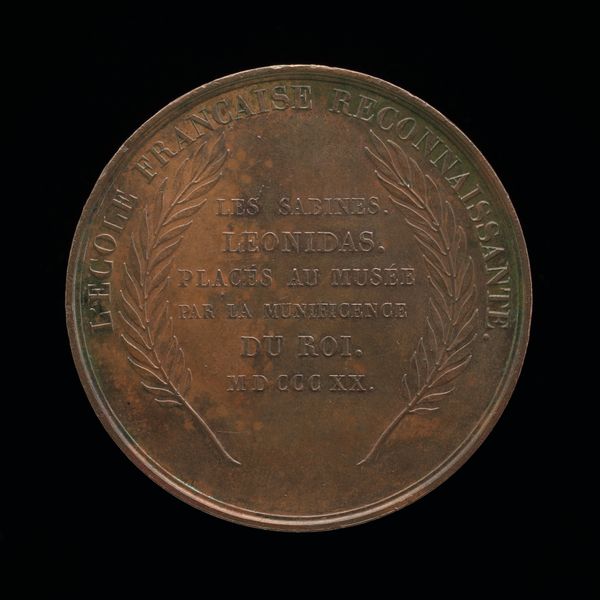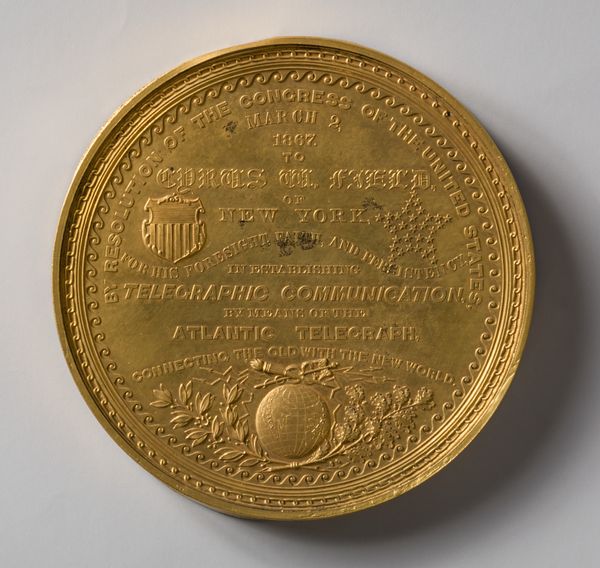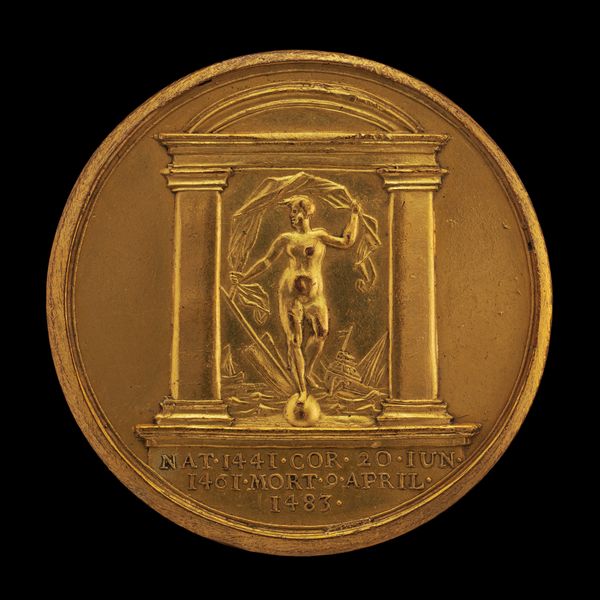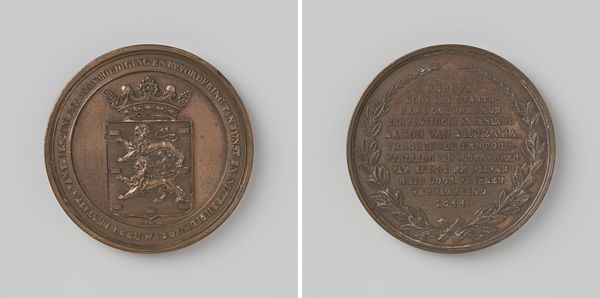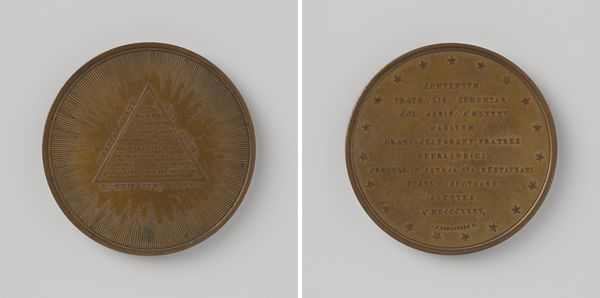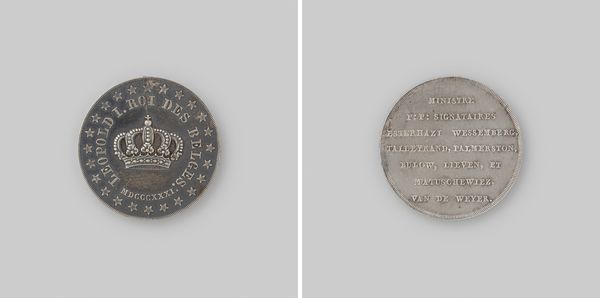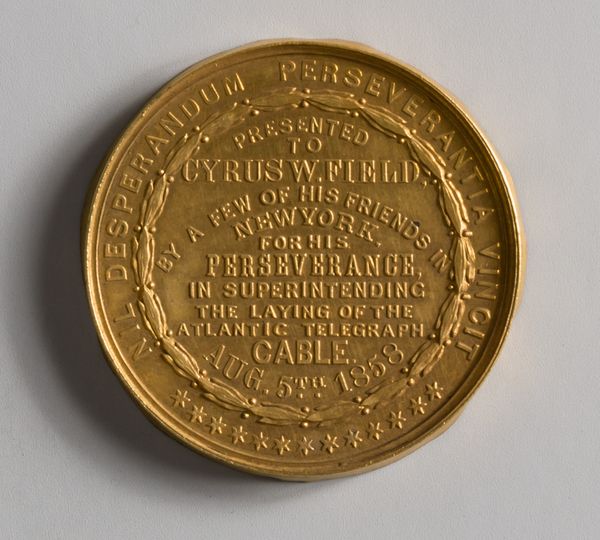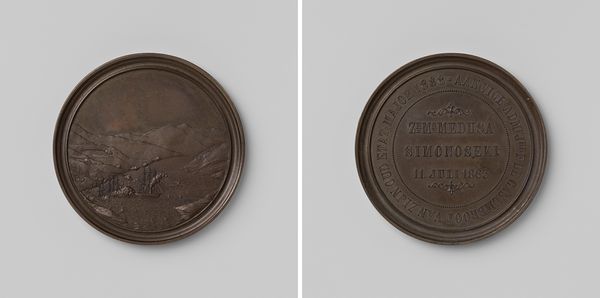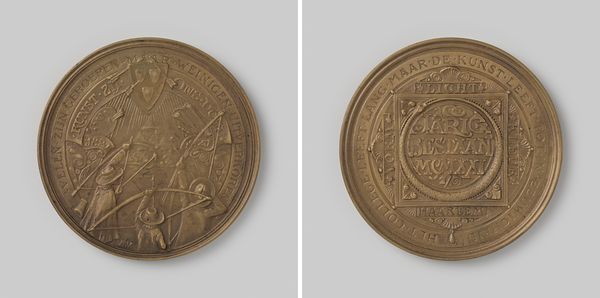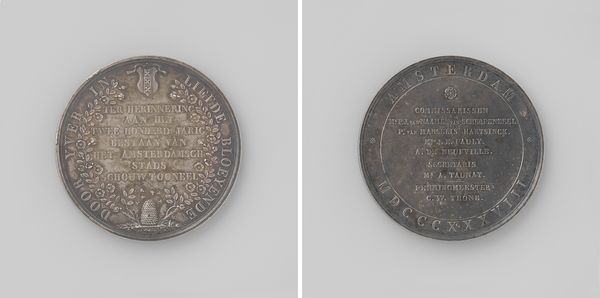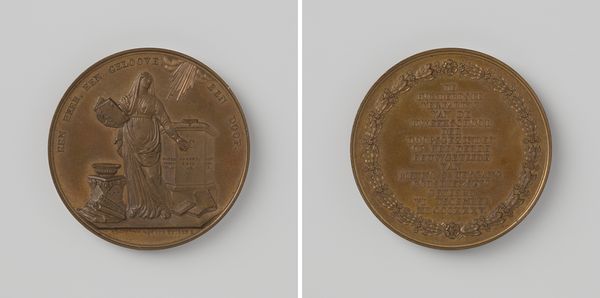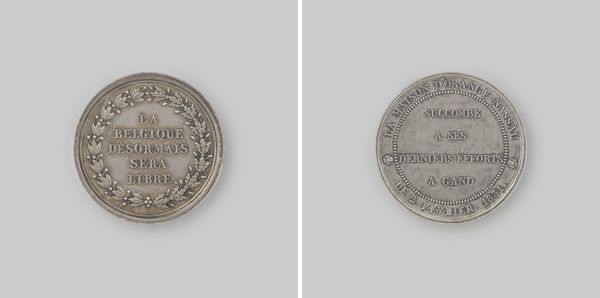![Inscription [reverse] by Louis Michel Petit](/_next/image?url=https%3A%2F%2Fd2w8kbdekdi1gv.cloudfront.net%2FeyJidWNrZXQiOiAiYXJ0ZXJhLWltYWdlcy1idWNrZXQiLCAia2V5IjogImFydHdvcmtzLzJlZTFmMDc1LWNmZmYtNDUxNy1iMmNhLTJhMTQ2NjMzYmM5Zi8yZWUxZjA3NS1jZmZmLTQ1MTctYjJjYS0yYTE0NjYzM2JjOWZfZnVsbC5qcGciLCAiZWRpdHMiOiB7InJlc2l6ZSI6IHsid2lkdGgiOiAxOTIwLCAiaGVpZ2h0IjogMTkyMCwgImZpdCI6ICJpbnNpZGUifX19&w=3840&q=75)
relief, bronze, sculpture, engraving
#
neoclacissism
#
relief
#
bronze
#
sculpture
#
engraving
Dimensions: overall (diameter): 4.13 cm (1 5/8 in.)
Copyright: National Gallery of Art: CC0 1.0
Editor: This is a bronze relief, “Inscription [reverse]” by Louis Michel Petit, from 1826. The texture and circular design create a sense of completion and formality, almost like a historical document. What’s particularly striking is how the olive branches seem to embrace the text, yet simultaneously define its boundaries. What meaning do you find in the symbolism here? Curator: The laurel wreath, here olive, is pivotal. Across centuries and cultures, from ancient Greece to Napoleonic France and beyond, such wreaths symbolize triumph, honour, and civic virtue. The very act of framing text—words, which themselves carry meaning—with this iconographic motif elevates the inscription, reinforcing the memory and celebration of a specific moment in time. Have you noticed anything about the text itself? Editor: Yes, it commemorates the establishment of the Galerie Vernet, and it mentions the Musée Calvet. It seems very deliberately worded, almost… ceremonial? Curator: Precisely! The language itself becomes part of the symbolic landscape. Notice how the text meticulously credits all parties involved – the municipal council, the mayor… It speaks to a desire for lasting recognition and public record. Each name carefully etched, each date, amplifies its significance over time. How does the combination of text and symbol make you feel? Editor: I see what you mean. The precise wording alongside the triumphant laurel emphasizes the importance of that event to the city, making it less a statement and more an historical marker of civic pride. Curator: And consider how that pride resonates, even now, through the preservation and display of this object. It's a dialogue across centuries! Editor: So it is. Looking at the art now, it makes me want to learn more about that specific historical context in Avignon. Curator: Indeed. Art acts as a powerful means of exploring a very deep cultural memory.
Comments
No comments
Be the first to comment and join the conversation on the ultimate creative platform.
